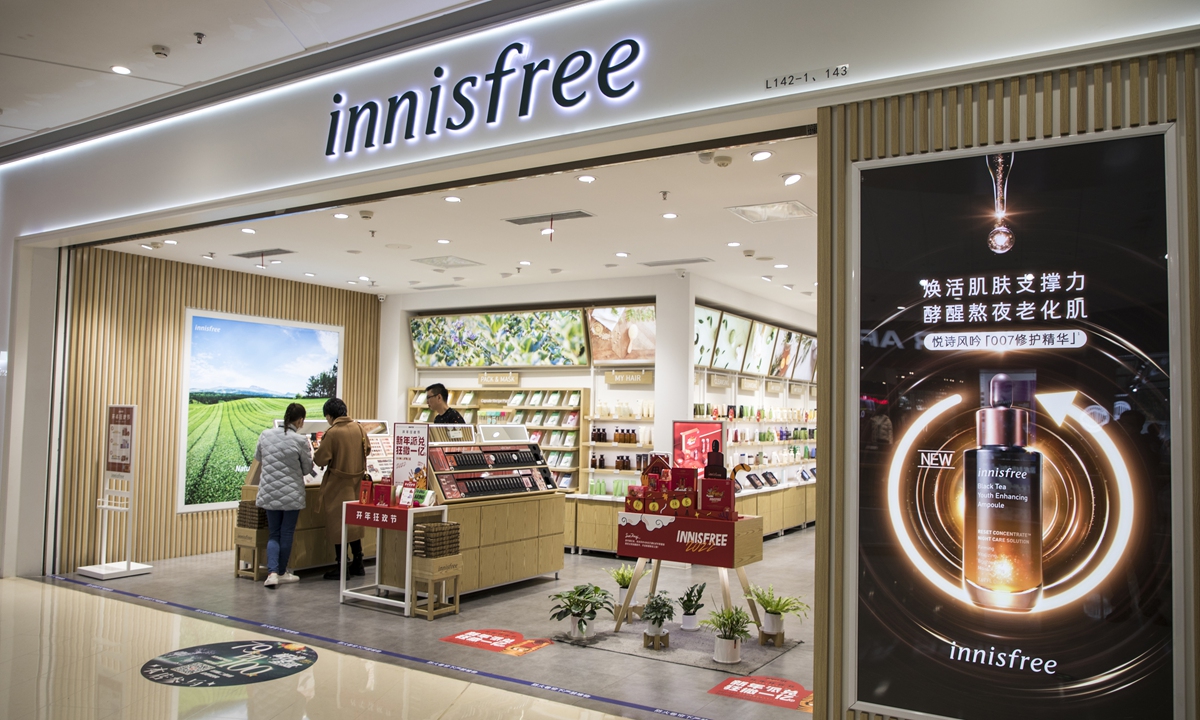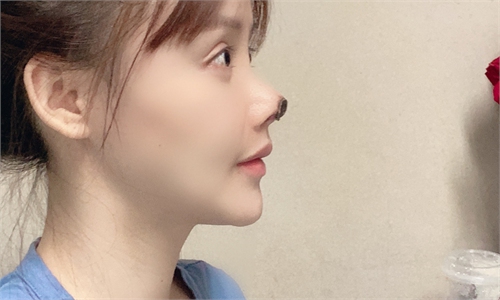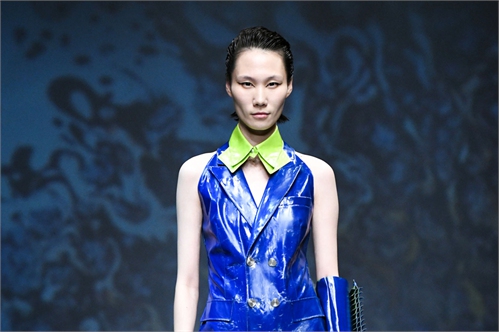Innisfree closes down 80% of its stores in Chinese mainland citing strategy adjustment
Rise of domestic brands leads to fierce competition

A store of innisfree in Shanghai Photo: VCG
Twenty seven-year-old Yao Linxiang was not surprised to hear about the store closures of South Korean cosmetic brand Innisfree as she turned to embrace Chinese and Japanese cosmetics in recent years - a popular trend among mainstream Chinese consumers.
"I have used skin care suits, face powder and mascara from Innisfree, but their effects were not satisfactory," Yao, a Beijing-based book editor, told the Global Times on Tuesday.
South Korean cosmetic brands used to be at all the rage in China before 2017 when Korean TV dramas were gaining popularity among Chinese audiences.
In 2014, South Korea exported $600 million worth of cosmetic products to China, accounting for 31 percent of its total cosmetic exports, according to statistics published by South Korean authorities.
However, changes of Chinese consumption patterns in recent years have led to a change in the market landscape, and the rise of domestic cosmetic brands has created fierce competition, analysts said.
Innisfree is reportedly closing 80 percent of its physical stores in the Chinese mainland as part of the company's strategy.
Several Chinese domestic news outlets reported over the weekend that the South Korean cosmetic brand is slashing its mainland stores to 140 from a peak of over 800.
The beauty and cosmetics conglomerate, AmorePacific, owner of the Innisfree brand, said that the company is optimizing its sales channels in China and strategic adjustments will continue into 2022, according to a report on Monday by domestic financial news portal 21jingji.com.
However, a representative from the company's PR department told the Global Times on Monday that "the ongoing optimization is restricted to the Innisfree brand."
AmorePacific also said it is attaching more importance to the middle and higher segment of its products and online sales channels.
Innisfree, which targets young women aged 20 to 26, had over 800 physical stores at its peak after a rapid expansion since entering the Chinese market in 2012.
The adjustment process has been an unfolding story. The brand closed down 40 loss-making stores in 2019 and a further 90 in 2020, according to media reports.
It was reported that the company noted a decline in its brand popularity in China during the COVID-19 pandemic and a shift by Chinese consumers away from middle-priced products toward luxury brands or brands that offer strong cost performance. Innisfree staff contacted by the Global Times refuted this trend, but did not provide further details.
Innisfree is not the only AmorePacific brand to shed businesses in China. Etude House, another brand owned by the company, closed down all of its 58 stores prior to March 2021.
According to AmorePacific's financial report up to September 2021, the company's overseas sales fell 9.2 percent, with some media attributing the decline to the company's shutting down of stores in China.
Changing market
Some netizens commented that Innisfree's waning fortunes in China are linked to its uncompetitive products and the rise of Chinese cosmetic brands in the niche market it occupies.
"When I first used Innisfree products, I felt they were attractive in price and quality. But with e-commerce booming in China, I have more choices for cosmetics," a consumer surnamed Liu told the Global Times on Tuesday.
She noted that Chinese skin care products and cosmetics have become more popular in recent years. "I think the ingredients of Chinese cosmetics are healthier and better priced," Liu added.
A whitepaper on the Chinese makeup market published by Deloitte in 2020 pointed out: "Powered by consumers, supply chain and e-commerce/social media marketing platforms, emerging local brands stand out. Leading Chinese brands have grown exponentially in recent years, with dominant shares in the rapidly consolidating local brand segment."
The market share of local makeup brands' Gross Merchandise Volume on China's leading e-commerce platform Tmall.com hit 61 percent in 2019, compared with 39 percent represented by overseas brands, the report showed.
The target customers for these products in China are changing, shifting from the people born in 1960s and 1970s to 1980s-2000s, said Zhang Yi, CEO of iiMedia Research Institute.
"Whether the products are attractive to young buyers now matters. The cost performance is also a big consideration for customers," he noted.
As Chinese cosmetic products rise, many foreign brands face challenges in the Chinese market, not only South Korean brands. "Their marketing strategy must catch up with the market," Zhang suggested.
When social media and short-video apps became hot in China, marketing methods started to cater to the purchasing demand on these niche platforms, such as short-video platform Douyin (China's version of TiKTok) and Chinese lifestyle app Xiaohongshu where online influencers promote cosmetic products.
"Many big brands have not followed the changes in the Chinese market. If they cannot meet the demand and expectations of Chinese consumers, their growth in the market is doomed to fail," Zhang warned.
According to a forecast by iiMedia, the market size of China's cosmetics industry is expected to reach 498.6 billion yuan ($78.46 billion) in 2022.


